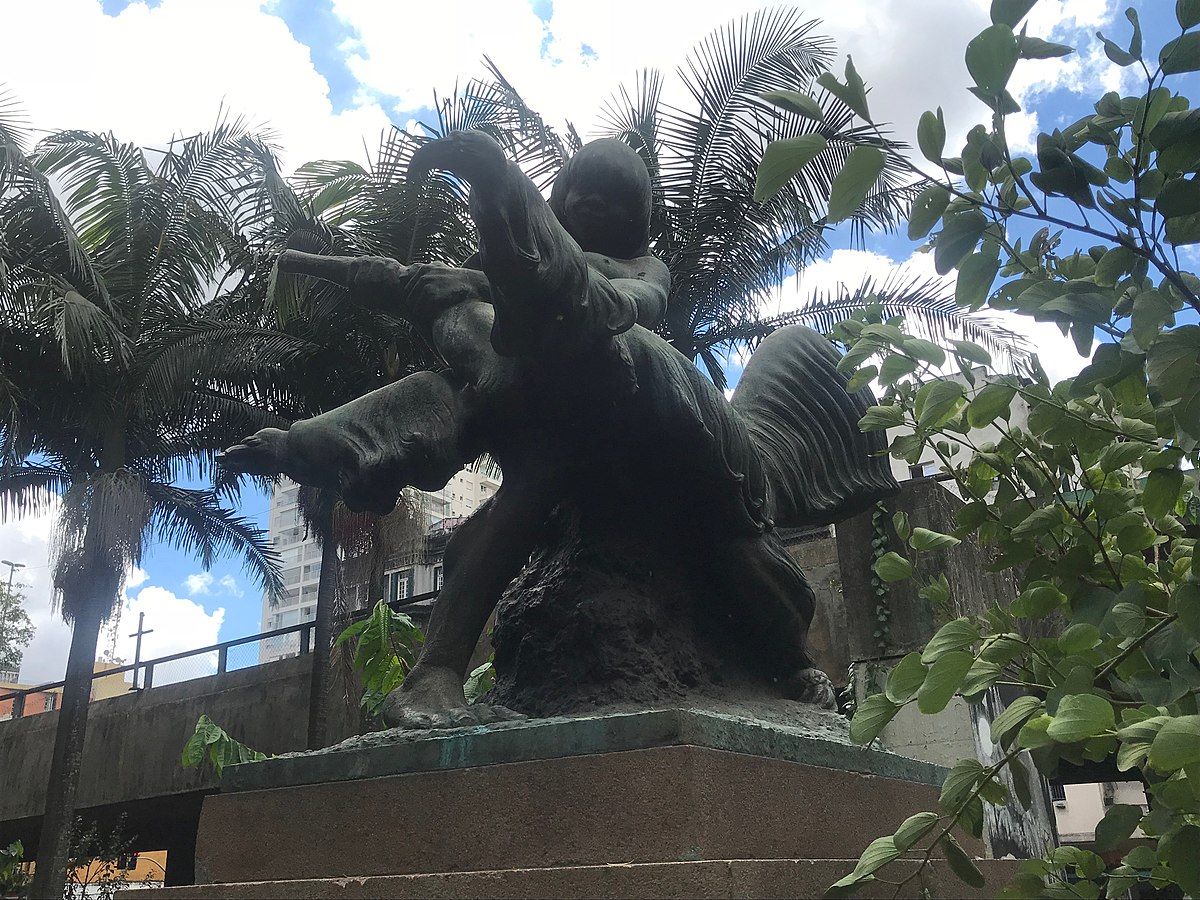About
In an otherwise unremarkable corner of São Paulo city, there stands a striking bronze sculpture of an indigenous child playfully wrestling with a giant anteater, symbolizing a world lost forever.
The monument portrays a scene that departs from the average ubiquitous Greco-Roman figurative sculptures that can be found all over the world. The child is smiling as it wrestles with the creature, which flails its sharp claws. The subject matter is interesting because although the anteater is often seen comically outside of Latin America, it is an animal that can be lethal when defending itself against humans, and has been known to cause fatal injuries to hunters with its claws when cornered.
This sculpture was created by the Italian-Brazilian sculptor Ricardo Cippichia in the 1940s, as one of many in a government-sponsored creative project meant to brighten up the surroundings of the Santa Cecilia borough. Cippichia, like many Brazilian artists in the early to mid-20th century, had been influenced by the Degringolismo movement.
Degringolismo sought to achieve a greater cultural and aesthetic authenticity through the rejection of dominant models of artistic expression and schools of thought coming from the United States and, to a lesser extent, Europe. Instead, the movement sought out themes with a more direct relation to the Brazilian experience, through the exploration of mythology, folklore, landscapes, and nature native to Brazil.
The sculpture is entitled simply as "O Indio e o Tamanduá," or "The Indian and the Anteater," but the symbolic meaning is clear. The indigenous child is thought to represent the pre-colonial inhabitants of the Anhangabaú region that we now know as São Paulo city, the Tupi Indians. The giant anteater both makes reference to the Tamanduateí river that runs through this area and the fact that this animal was once a common species and sight in the area. (The name "Tamanduateí" translates as "the river of the anteaters" in the Tupi language.)
Today, both the Tupi indigenous tribes and the giant anteater are nearly extinct within the state of São Paulo. Their Atlantic forest jungle homeland and habitat has been replaced with a gargantuan concrete jungle. However, this intriguing bronze sculpture remains as a pertinent and poignant reminder of a world that has vanished.
Related Tags
Know Before You Go
Located in the Praça Marechal Deodoro in the Barra Funda neighborhood of São Paulo. It is best to visit the sculpture during the day as the area can be quite rough at night. It's located a short walk from the nearest metro station, Marechal Deodoro (on the red line).
Published
September 14, 2018




























